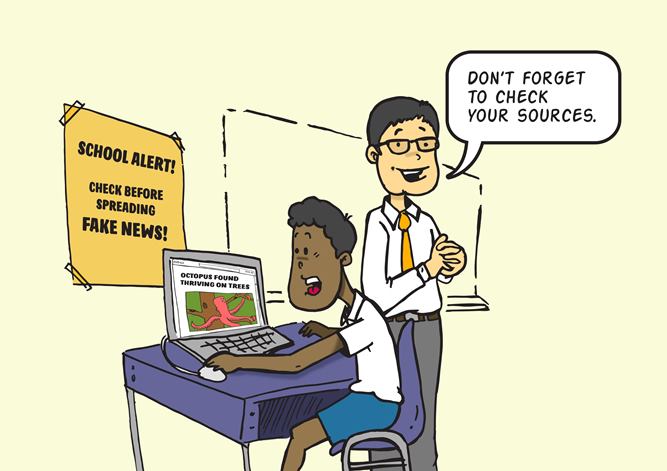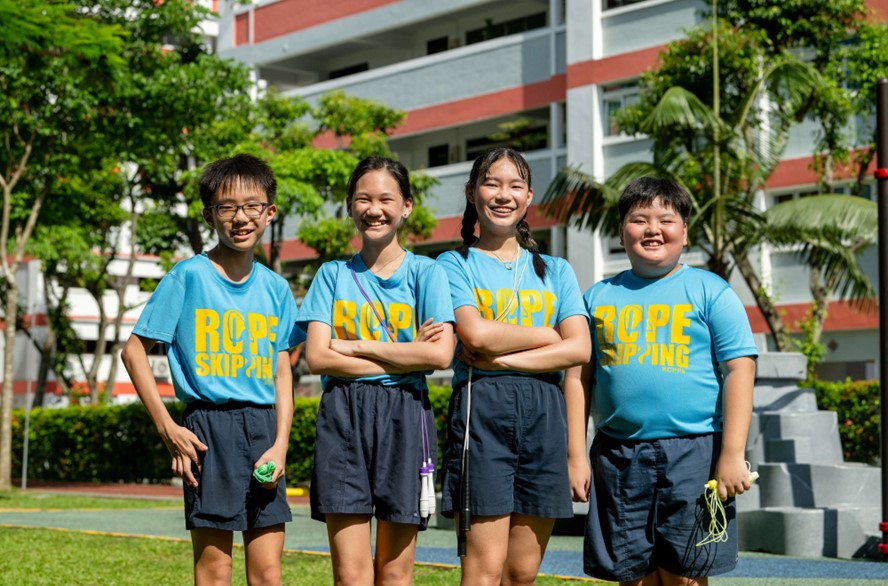At Sembawang Secondary School, Secondary 1 students are shown a website on an endangered animal called the Pacific Northwest Tree Octopus during a history lesson. They are asked to explore the website to find out more about the endangered octopuses that thrive in temperate rainforests.
After 15 minutes, the teacher, Mr Puah You Kai, springs a surprise: “Everything you have just read is fake. The Pacific Northwest Tree Octopus does not exist!” The real test was to see if the students could identify the website as a hoax.
One of the students, Ninuri Ruwansi says she “felt like a fool” after realising she had been duped. She quipped, “The website looked so believable! It even had an organisation logo so (I thought) it must be true.”
These lessons are part of the school’s efforts to develop in students the “critical lens” and media literacy skills. By using real-life examples, it helps to anchor the students’ learning of these skills, which includes assessing the reliability of the information from its provenance, and cross-checking with other sources.
Digging out the source
Critical and inventive thinking, as well as communication, collaboration and information skills, are among the 21st Century Competencies that schools aim to develop in students.
At Serangoon Gardens Secondary, for instance, students are exposed to a range of sources during social-studies lessons, and taught to assess their authorship, message and credibility. These sources include government websites, mainstream media and alternative online news sites such as Mothership and TR Emeritus, as well as posts from personal blogs.
In Secondary 2, all students work in groups to complete a research project. They have to formulate an inquiry on a social issue such as “Do academic degrees matter in helping Singaporeans succeed in the real world?”
To answer the question, students gather information from books and online sources and conduct interviews, and put together a reasoned argument for their case. Such research projects allow students to apply what they have learned in class about authenticating sources, synthesising and evaluating information.
Learning to dig deeper
Having been duped by the tale of the tree octopus, Sembawang Secondary’s Ninuri is more careful with what she reads online. When she comes across an image with a sensational headline, she thinks twice before believing or sharing it. Ninuri says: “It may have been edited or the caption could have false information.”
In fact, Ninuri shared that she herself had been a victim of disinformation recently. Someone had posted a photo of her at the void deck on a website with a caption saying she had been caught smoking. Some of her friends believed the post, which upset her.
“Now I understand why my friends believed what was said about me. I also fell for something like that.” she says.
Ninuri learns that the best way to spot fake news is to find out more. “You can read more on the same topic and check if the same information is (said) in both sources. Also, there are a few online tools you can use to check if an image has been edited.”
Other methods include checking if a trustworthy organisation owns the website and cross-referencing with fact-checking websites such as Snopes.com.
In October 2017, Sembawang’s students will get to take their learning a step further. The school is partnering with the non-profit organisation, Council for Third Age, to conduct a media-literacy workshop for elderly.
A group of Secondary 3 students will be acting as workshop instructors and facilitators to share tips on identifying fake news and impart skills on creating a digital scrapbook with the workshop attendees.
“When you’re thinking of how to teach others to identify fake news, you think a bit deeper [about the issue] too.” Mr Puah says.
As a parent, how can you teach your child to spot fake news? Get the tips here.






